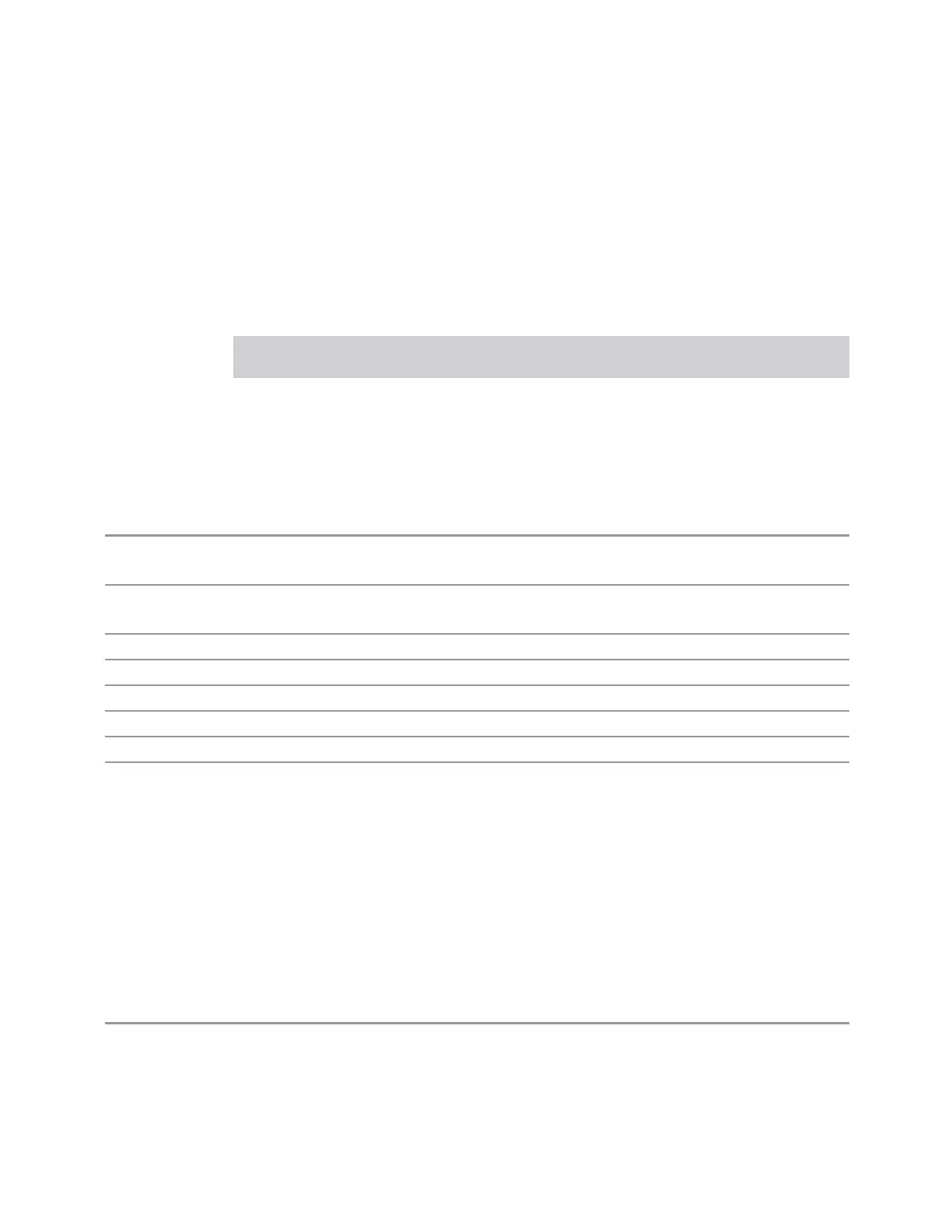3 VMA Mode
3.1 Digital Demod Measurement
In general, the best filter length is the smallest that meets your measurement
requirements. For measurements at the transmitter, the filter length may only need
to be a few symbols in length. Longer filter lengths may be needed to measure
multi-path environments.
The filter length also determines the placement of the impulse response in the
equalization filter. For longer filter lengths, the instrument puts the initial, unit
impulse response closer to the beginning of the time record to accommodate multi-
path measurements, as follows:
Filter Length
(symbol)
Unit Impulse Response Position
(symbol)
3 to 31 (length - 1)/2
31 to 75 15
75 to 99 (length)/5
For example, if the filter length is 11, the unit impulse response is positioned at
symbol 5. If the filter length is 35, the unit impulse response is positioned at symbol
15.
Remote
Command
[:SENSe]:DDEMod:SEGMent1|…|6:EQUalization:FLENgth <integer>
[:SENSe]:DDEMod:SEGMent1|…|6:EQUalization:FLENgth?
Example
:DDEM:SEGM1:EQU:FLEN 21
:DDEM:SEGM1:EQU:FLEN?
Notes Must be an odd number. If an even number is entered, it is rounded up to the next odd
Preset 21
State Saved Yes
Min 3
Max 99
Backwards
Compatibility
SCPI
[:SENSe]:DDEMod:EQUalization:FLENgth
Convergence
Sets the adaptive filter convergence factor higher to converge faster. Note that too
high a value can cause the filter to not converge. Set the convergence factor smaller
for better accuracy.
This value is normalized, to convert the Convergence value in the VSA to the
normalized value, divide the 89600 VSA Convergence value by 1e-07.
Remote
Command
[:SENSe]:DDEMod:SEGMent1|…|6:EQUalization:CONVergence <real>
[:SENSe]:DDEMod:SEGMent1|…|6:EQUalization:CONVergence?
343 Vector Modulation Analyzer Mode User's &Programmer's Reference

